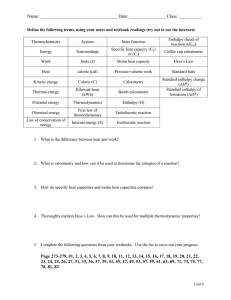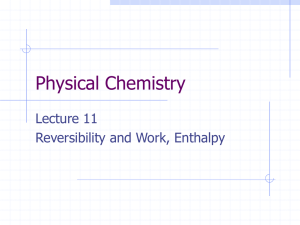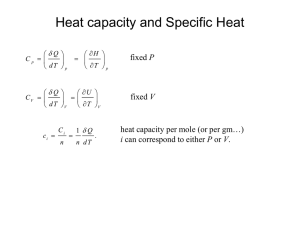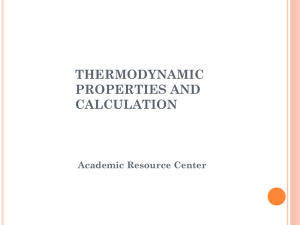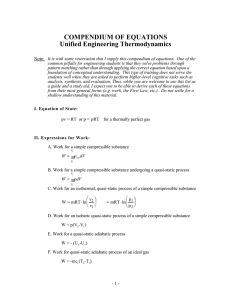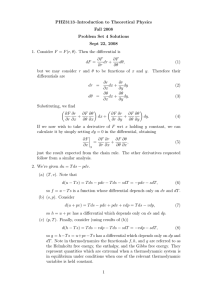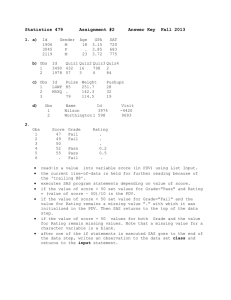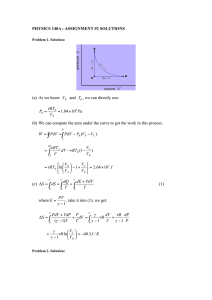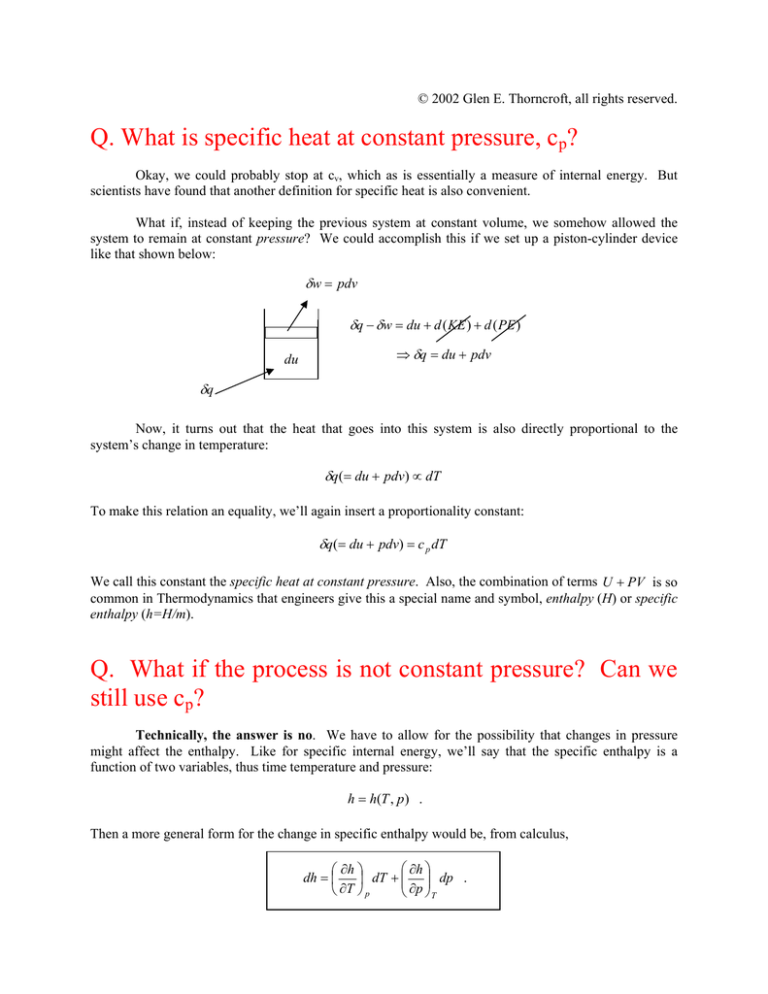
© 2002 Glen E. Thorncroft, all rights reserved.
Q. What is specific heat at constant pressure, cp?
Okay, we could probably stop at cv, which as is essentially a measure of internal energy. But
scientists have found that another definition for specific heat is also convenient.
What if, instead of keeping the previous system at constant volume, we somehow allowed the
system to remain at constant pressure? We could accomplish this if we set up a piston-cylinder device
like that shown below:
δw = pdv
δq − δw = du + d ( KE ) + d ( PE )
du
⇒ δq = du + pdv
δq
Now, it turns out that the heat that goes into this system is also directly proportional to the
system’s change in temperature:
δq(= du + pdv) ∝ dT
To make this relation an equality, we’ll again insert a proportionality constant:
δq(= du + pdv) = c p dT
We call this constant the specific heat at constant pressure. Also, the combination of terms U + PV is so
common in Thermodynamics that engineers give this a special name and symbol, enthalpy (H) or specific
enthalpy (h=H/m).
Q. What if the process is not constant pressure? Can we
still use cp?
Technically, the answer is no. We have to allow for the possibility that changes in pressure
might affect the enthalpy. Like for specific internal energy, we’ll say that the specific enthalpy is a
function of two variables, thus time temperature and pressure:
h = h(T , p) .
Then a more general form for the change in specific enthalpy would be, from calculus,
⎛ ∂h ⎞
⎛ ∂h ⎞
dh = ⎜
⎟ dT + ⎜⎜ ⎟⎟ dp .
⎝ ∂T ⎠ p
⎝ ∂p ⎠ T
We will call the first partial derivative the specific heat at constant pressure,
⎛ ∂h ⎞
cp ≡ ⎜
⎟ .
⎝ ∂T ⎠ p
(The other partial derivative has no name.) So h is, in general, a function of temperature and
pressure.
But wait. Under certain conditions the specific enthalpy is approximately a function only of temperature.
This is true when the substance can be approximated as either an incompressible substance or an ideal
gas. In these cases the partial derivative, (∂h / ∂p )T , is negligible, and so
and
⎛ dh ⎞
dh = ⎜
⎟dT
⎝ dT ⎠
⎛ dh ⎞
cp ≡ ⎜
⎟.
⎝ dT ⎠
Note that the partial derivatives have been replaced by ordinary derivatives because h is now a function
only of T. We also drop the subscript p because it doesn’t matter anymore whether the system is at
constant pressure. Then we can write,
dh = c p dT .





